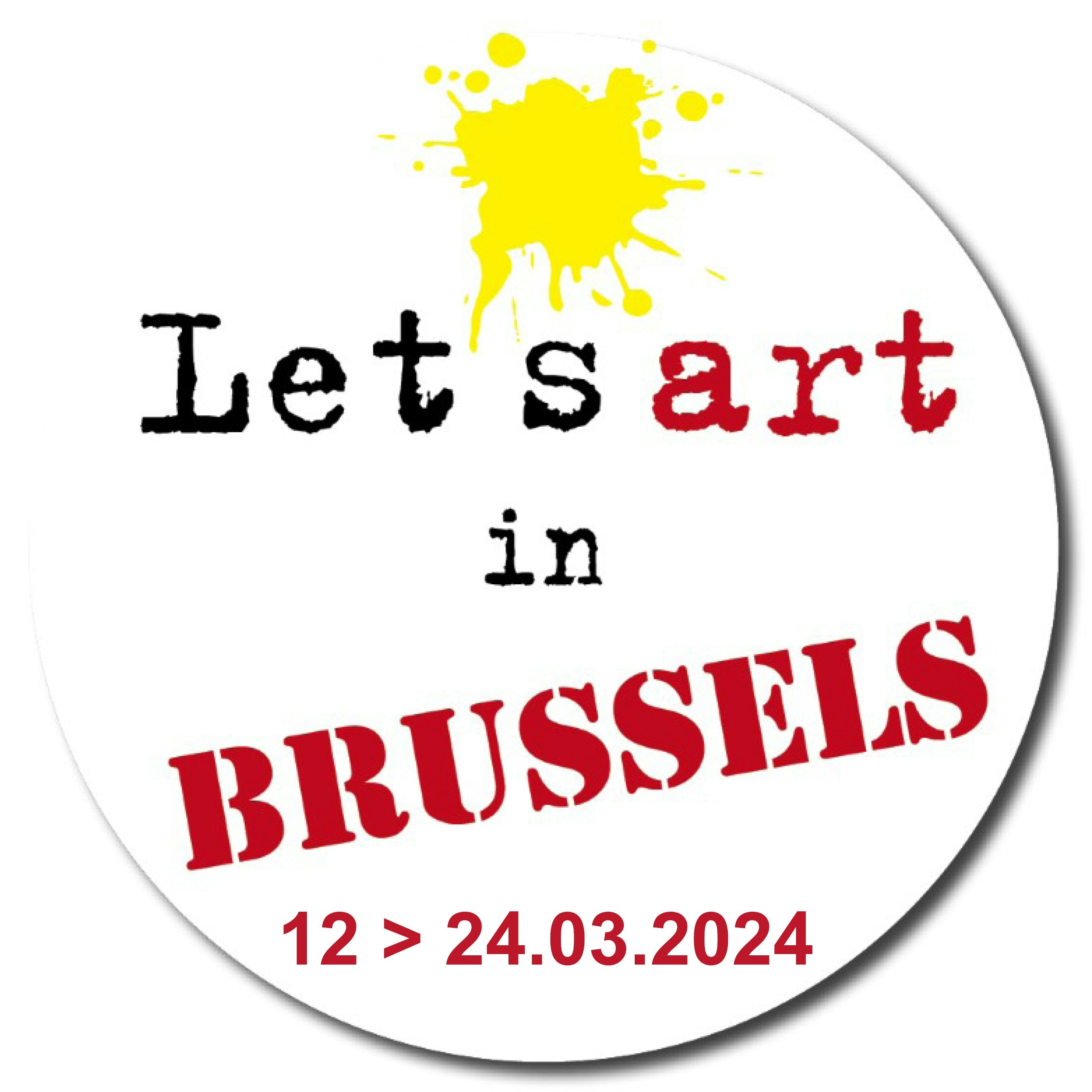Exposition Sculpture
10.04.2025 au 01.06.2025
Vernissage 10.04.2025 de 18:00 à 21:00 (présence des artistes)
ACCES LIBRE ET GRATUIT
RDV à Peep Art Gallery x Artémisia Asbl - 33, r
Let's art in Brussels 2024
12maart 2024
-24maart 2024
10:00 - 18:00
Centre d'art du Mont-de-Piété / Kunstcentrum van de Berg van B.
Rue Saint-Ghislain - Sint-Gisleinsstraat 19, 1000 Brussels, Brussels-Capital, Belgium
Description
⬇️NL ➡️FR Let’s art in Brussels 2024 est LA rencontre du monde artistique belge.
17 artistes présenteront leurs tableaux, leurs sculptures, leurs photographies et leurs bijoux. Ensemble, ils mettront en avant la culture belge dans toute sa diversité.
ℹ INFOS PRATIQUES
Dates de l'exposition
Du mardi 12 au dimanche 24 mars 2024
Horaires de l’exposition
Mardis (10-16h)
Mercredis (16-18h)
Jeudis (16-18h) et nocturnes (18h-21h)
Vendredis (16-18h)
Samedis et dimanches (11-18h)
🎫 Entrée gratuite, sans réservation
AU PROGRAMME
Défilé de mode du créateur belge Marco Luca le mercredi 20 mars 2024 entre 16h et 18h.
ℹ Plus d'infos sur l'expo: https://montdepiete.be/nl/blogs/news/expo-lets-art-in-brussels-2024
--
Let's art in Brussels 2024 is DE ontmoetingsplaats voor de Belgische kunstwereld.
17 kunstenaars stellen er hun schilderijen, beeldhouwwerken, foto's, juwelen en andere creaties voor. Samen willen ze de Belgische cultuur in al haar diversiteit in de kijker zetten.
ℹ PRAKTISCHE INFORMATIE
Data van de tentoonstelling
Van dinsdag 12 tot zondag 24 maart 2024
Openingsuren van de tentoonstelling
Dinsdag (10-16u)
Woensdag (16-18u)
Donderdag (16-18u) en nocturnes (18h-21u)
Vrijdag (16-18u)
Zaterdag en zondag (11-18u)
🎫Gratis toegang, zonder reservatie
OP HET PROGRAMMA
Modeshow van de Belgische ontwerper Marco Luca op woensdag 20 maart 2024 tussen 16u en 18u.
ℹ️ Meer informatie over de tentoonstelling
https://montdepiete.be/nl/blogs/news/expo-lets-art-in-brussels-2024
17 artistes présenteront leurs tableaux, leurs sculptures, leurs photographies et leurs bijoux. Ensemble, ils mettront en avant la culture belge dans toute sa diversité.
ℹ INFOS PRATIQUES
Dates de l'exposition
Du mardi 12 au dimanche 24 mars 2024
Horaires de l’exposition
Mardis (10-16h)
Mercredis (16-18h)
Jeudis (16-18h) et nocturnes (18h-21h)
Vendredis (16-18h)
Samedis et dimanches (11-18h)
🎫 Entrée gratuite, sans réservation
AU PROGRAMME
Défilé de mode du créateur belge Marco Luca le mercredi 20 mars 2024 entre 16h et 18h.
ℹ Plus d'infos sur l'expo: https://montdepiete.be/nl/blogs/news/expo-lets-art-in-brussels-2024
--
Let's art in Brussels 2024 is DE ontmoetingsplaats voor de Belgische kunstwereld.
17 kunstenaars stellen er hun schilderijen, beeldhouwwerken, foto's, juwelen en andere creaties voor. Samen willen ze de Belgische cultuur in al haar diversiteit in de kijker zetten.
ℹ PRAKTISCHE INFORMATIE
Data van de tentoonstelling
Van dinsdag 12 tot zondag 24 maart 2024
Openingsuren van de tentoonstelling
Dinsdag (10-16u)
Woensdag (16-18u)
Donderdag (16-18u) en nocturnes (18h-21u)
Vrijdag (16-18u)
Zaterdag en zondag (11-18u)
🎫Gratis toegang, zonder reservatie
OP HET PROGRAMMA
Modeshow van de Belgische ontwerper Marco Luca op woensdag 20 maart 2024 tussen 16u en 18u.
ℹ️ Meer informatie over de tentoonstelling
https://montdepiete.be/nl/blogs/news/expo-lets-art-in-brussels-2024
